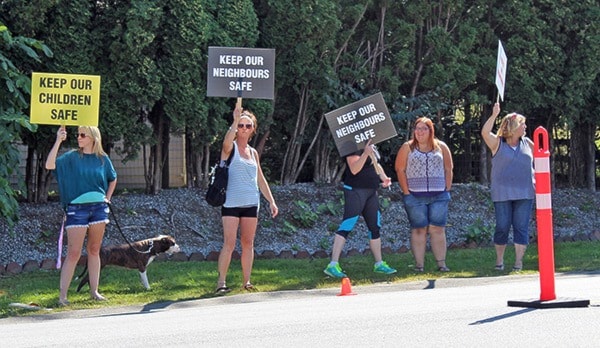Criminologist Yvon Dandurand believes that tactics such as public protests and social media campaigns to remove sexual offenders from neighbourhoods put citizens at greater risk of danger.
His viewpoint on the reintegration of sexual offenders may not be a popular one among citizens who don’t want such individuals living in their midst, but his position reflects academic experience and study.
Dandurand is a faculty member in the department of criminology and criminal justice at the University of the Fraser Valley in Abbotsford.
Among the numerous projects in which he has been involved is a 2012 166-page handbook for the United Nations titled “The Prevention of Recidivism and the Social Reintegration of Offenders.”
Dandurand believes the best approach to reintegration is “supervision and control” combined with services and support.
He was not surprised to hear of the public outcry against repeat sexual offender James Conway living in Abbotsford and now Mission, but the public protests that have been staged outside those residences are not productive, he maintains.
 Dandurand (in photo at left) said he understands that nobody wants a sexual offender living in their neighbourhood, but the “pinball approach” of driving a criminal from community to community does not eliminate the overall risk to society.
Dandurand (in photo at left) said he understands that nobody wants a sexual offender living in their neighbourhood, but the “pinball approach” of driving a criminal from community to community does not eliminate the overall risk to society.
“Pushing the problem into someone else’s backyard is not the solution.”
Sexual offenders will always live among us – most of them not even known to the public – but stigmatizing and isolating them can further aggravate their behaviours, Dandurand said.
He said successful reintegration requires an individual to meet three basic conditions of survival – a source of income, a place to live and the rebuilding of relationships.
“If you don’t allow a person to meet those three conditions, something’s going to give.”
Some critics have suggested that sexual offenders should be moved into more rural, isolated settings, but Dandurand disagrees.
He said it is easier to work with these offenders and hold them accountable when they are in a community where they are known and where resources are more easily accessible to help them manage their behaviours.
The more they are excluded from society, the greater risk they are going to be problematic, he said.
Dandurand said publicly releasing the name and photo of a sexual offender moving into a community poses a dilemma for authorities, prompting concerns about possible vigilante behaviour, but he said it is sometimes necessary to inform citizens of the risk.
In certain cases, knowing the risk and being able to keep on top of it is better than not knowing at all, he said.
Dandurand said he’s not suggesting that citizens become friends with these individuals, but that they find a way to balance their fears – which he says are often exaggerated by what is played out in TV shows and movies – with the greater good.
“In the end, it comes down to social responsibility. We all have a role to play.”
Driving offenders from city to city doesn't reduce risks, says John Howard Society
by Kelvin Gawley, Abbotsford News
Mark Miller, executive director of the John Howard Society (JHS) of the Lower Mainland, expresses similar views to Dandurand.
He agrees that protests against a sex offender in a community could actually make an individual more likely to re-offend.
“[I think the protesters] feel they’re doing something to keep the community safer. In fact, it may in some ways have the opposite effect,” Miller said.
The JHS is a non-profit organization that advocates for criminal justice reform and works with people engaged in the system, both during and after incarceration.
While the Lower Mainland branch does not have specific programming for sex offenders, it does support people in their transition from jail to life outside.
Attempts to drive someone out of a community hinder their ability to integrate and stabilize their lives, making them much more likely to re-offend, Miller said.
He said Conway has been able to access much of the supervision, support and housing assistance he needs, but that is often not the case for people in a similar situation.
“I think these are challenging situations for everyone – for the community, for agencies like ours that try to work with individuals to assist them to live in the community and to keep the community safe,” said Miller. “It’s challenging for agencies like the police and corrections that are involved in trying to keep the community safe as well.
“I think they are also challenging for the individuals like James Conway who are trying to live in the community and have the best quality of life possible that they can.”
Miller said it is crucial that individuals like Conway are provided with supports such as housing, therapy and social workers to greatly reduce their chance of re-offending.
He said calling for longer or even indefinite prison terms for sex offenders, as some protesters have done, is a “very simplistic and somewhat archaic” approach.
Miller, who is a parent himself, said he understands the protective instinct in parents to protest against Conway’s placement in residential areas. But he said the uproar and vocal opposition is not helpful to the community at large.
The systems in place to assess the risk of and prevent recidivism are “very strong,” Miller said.
OTHER ARTICLES IN THE SERIES:
Communities confront how to reintegrate those who have committed sex crimes
Safe reintegration is a priority, say BC Corrections and Correctional Service Canada
